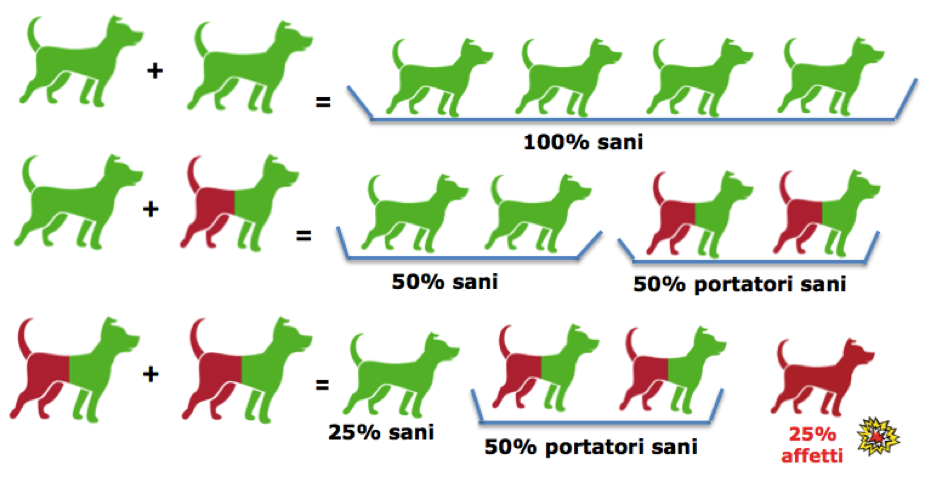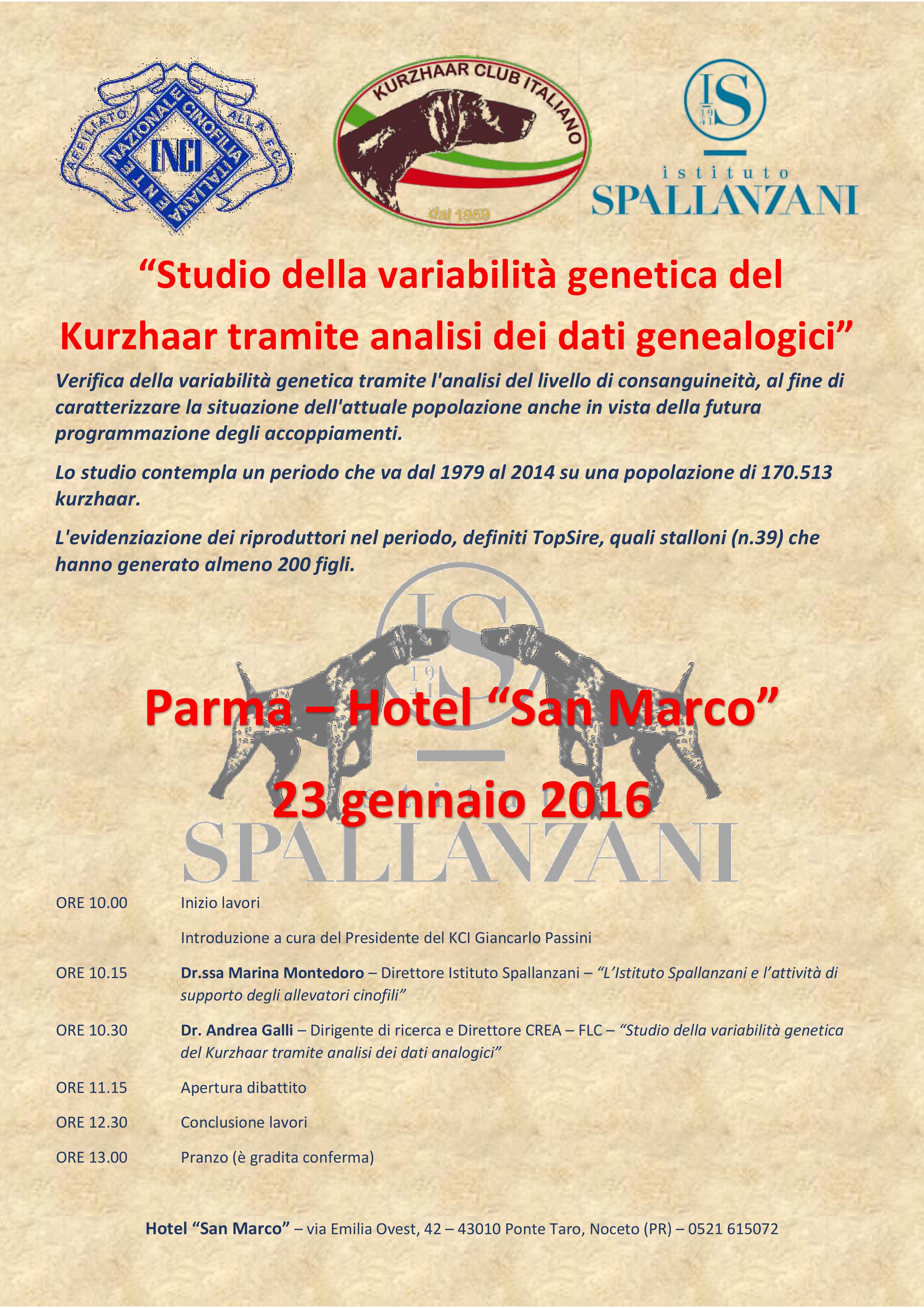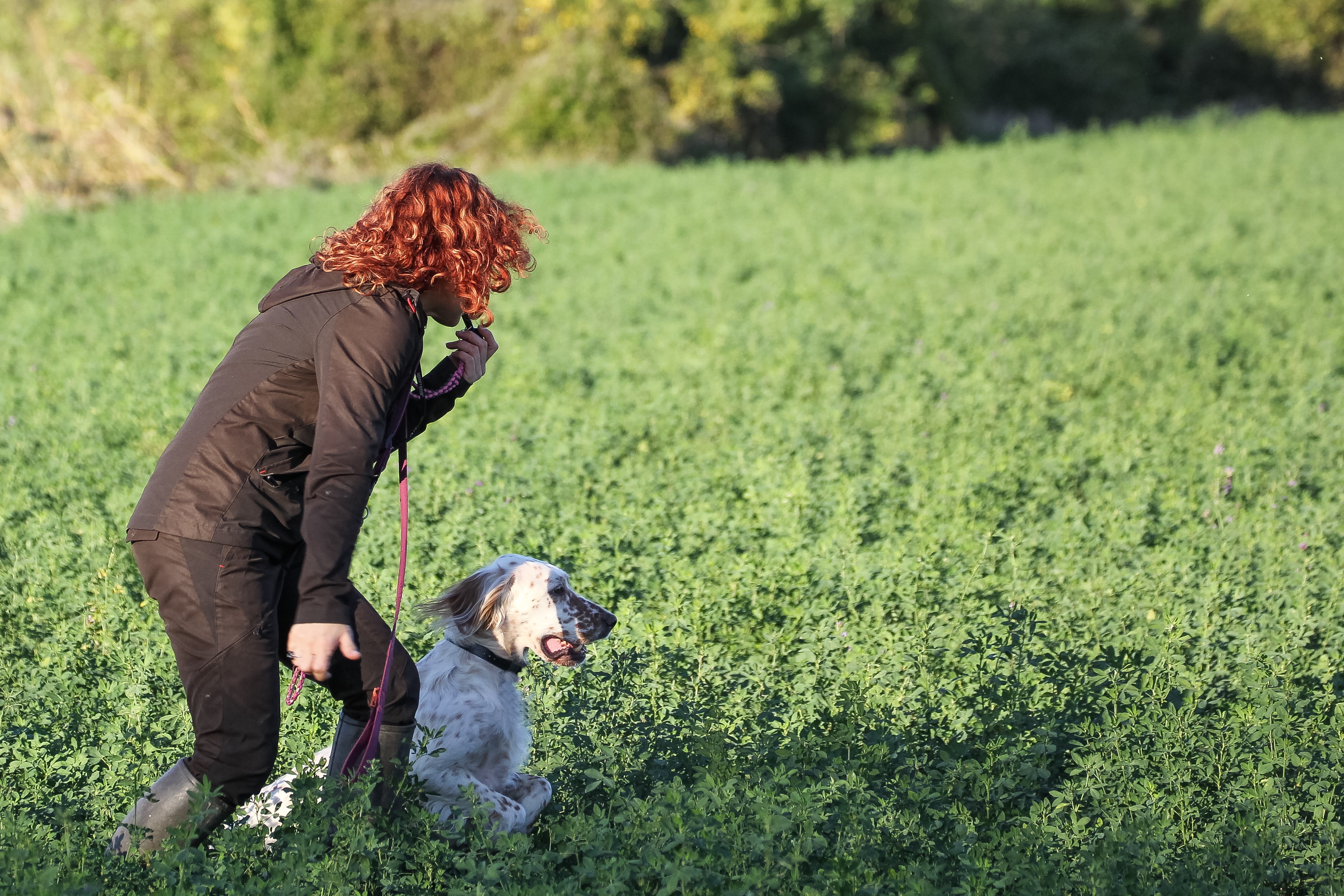
PRA & NCL-D nel setter inglese // PRA & NCL-D in the English Setter
For English Scroll Down
La sigla PRA (rcd 4) sta per Atrofia Progressiva della Retina mente la sigla NCL-D è acronimo di Lipofuscinosi Neuronale Ceroide. Cosa sono?
Si tratta di due malattie genetiche presenti in diverse razze canine, tra esse il setter inglese. Personalmente, sono a conoscenza della NCL-D da almeno 20 anni ma solo pochi anni fa avevo appreso che fosse stata individuata la mutazione. Mi risultava altresì che l’unico laboratorio che effettuava i test fosse in Repubblica Ceca.
Per quanto riguarda la PRA, invece, la disponibilità del test per il setter inglese e per il setter gordon è relativamente recente ma da diversi anni la malattia è conosciuta e testata nel setter irlandese, ne avevo parlato anche nel mio libro sui setter.
Cosa comportano queste malattie nello specifico? L’atrofia progressiva della retina causa cecità nei soggetti affetti. Il test a disposizione indaga su una delle forme di PRA presenti nel setter inglese. E’ possibile, purtroppo, che ce ne siano anche altre. Non esistono terapie per la PRA. La patologia è caratterizzata da insorgenza tardiva, si sviluppa cioè in soggetti adulti che potrebbero già essersi riprodotti.
Secondo il laboratorio Antagene, la mutazione responsabile della patologia è presente nel 7% della popolazione dei setter francesi (moltissimi dei quali, mi preme ricordarlo, hanno antenati italiani). Sono stati altresì riscontrati casi di PRA (rcd4) in setter inglesi norvegesi, di sangue italiano e non.
Sulla lipofuscinosi non ho dati numerici da trasmettere ma mi preme sottolineare che è una patologia neurodegenerativa GRAVE che porta a morte del soggetto. Un cane affetto da lipofuscinosi difficilmente raggiunge l’anno di età e trascorre i suoi pochi mesi di vita miseramente, causando sofferenza anche ai proprietari destinati a vederlo spegnere. E’ pertanto dovere degli allevatori e degli appassionati impedire che questo accada. Non esistono terapie per la NCL-D.
Cosa hanno in comune queste due patologie? Si tratta di patologie autosomiche recessive, causate da un unico gene che è recessivo. Questo significa che noi possiamo testare il DNA per individuare il gene con un semplice prelievo di saliva o di sangue. Ogni soggetto possiede due copie dello stesso gene. Attraverso l’esame del DNA possiamo scoprire se entrambe le copie sono “sane”, in quel caso si parla di cane “esente” e omozigote; se è “portatore” (una copia è mutata), quindi il soggetto è “portatore” e eterozigote oppure “affetto” (due copie mutate). Trattandosi di geni che si comportano in maniera recessiva solo i soggetti “affetti” (due copie mutate), manifesteranno la malattia. I soggetti portatori NON manifesteranno la malattia ma, se si intende usarli in allevamento, vanno accoppiati SOLO con soggetti esenti e i cuccioli vanno poi ricontrollati in quanto il 25% di loro (un cucciolo su quattro) sarà composto da portatori. Un soggetto portatore può trasmettere il gene mutato alla prole. Un soggetto affetto trasmette sicuramente il gene mutato alla prole pertanto NON va messo in riproduzione.
Il costo dei test sul DNA dipende dal laboratorio a cui vi rivolgete ma, ultimamente, ci sono buone offerte. Da Antagene ho pagato 98 euro per entrambi i test. Si tratta di una cifra da leggersi all’interno di un programma di selezione, ogni allevatore e ogni appassionato, prima di pensare a fare cucciolate, dovrebbe fare tutto il possibile per mettere a mondo soggetti prima ancora di essere “bravi” e “tipici” siano “sani.

***
PRA (rcd 4) means Progressive Retinal Atrophy while NCL-D stands for Neuronal Ceroid Lipofuscinosis, two genetic diseases that can be found in some canine breeds, including the English Setter. NCL-D had been known for at least 20 years but, as far as I know, the gene responsible for it had been found only a couple of years ago. I also remember that, at the time, there was only a lab testing for it in Czech Rep.
As for the PRA, the availability of a test for the ES and GS is quite recent as well, while the disesase is well know among IS breeders. I wrote about it in my Setter book which came out in 2004.
Which are the symptoms caused by these disesaes? PRA causes progressive loss of vision (at night and then in daylight) culminating in blindness. The DNA test identifies only one of the mutations causing PRA (there are more “types” of PRA which seems to affect the ES) and Antagene Lab estimates the mutation to be present in the 7% of the French ES population (most of which has Italian ancestry). There are also cases of PRA (rcd 4) in Norway and carrier dogs who are both of Norwegian ancestry and of Italian ancestry. There are no therapies for PRA and this is a late onset disease which means the dog might start showing symptoms of the disease after having already been used as a stud/bitch.
I have no numerica data on lipofuscinosis which is a neurodegenerative diseases leading to loss of motor function and vision and to behavioural disorders. The age of onset can vary between 12 and 18 months and the animal will eventually died, It is a serious and painfull disesaes that would devastate owners too, it is therefore very important that breed lovers and breeders work to eradicate it.
Both these diseases are autosomal recessive, hence an animal might have three possible status:
Clear (normal homozygous) – Both the copies of the genes are correct, he or she will not develop the disease nor pass the mutation to the prole.
Carrier (heterozygous) – One of the gene copy is mutated, he or she will not develop the diseases but will pass the mutation tp 50% of the prole. If you intend to breed a carrier, his or her partner must be a Clear. In this case, about 25% of the puppies could be carriers as well.
Affected (mutated homozygous)– Both the copies of the genes are mutated. He or she will develop the disease and pass it to all the prole. These dogs must not be used for breeding.
DNA test costs vary according to the laboratory you choose but you can find good deals online. I paid 98 euros (two tests) choosing Antagene, not a huge amount of money if you are a reputable breeder caring about the breed. A reputable breeder must consider health prioritary, conformation and working ability are very important traits to select for but health should always come first.





